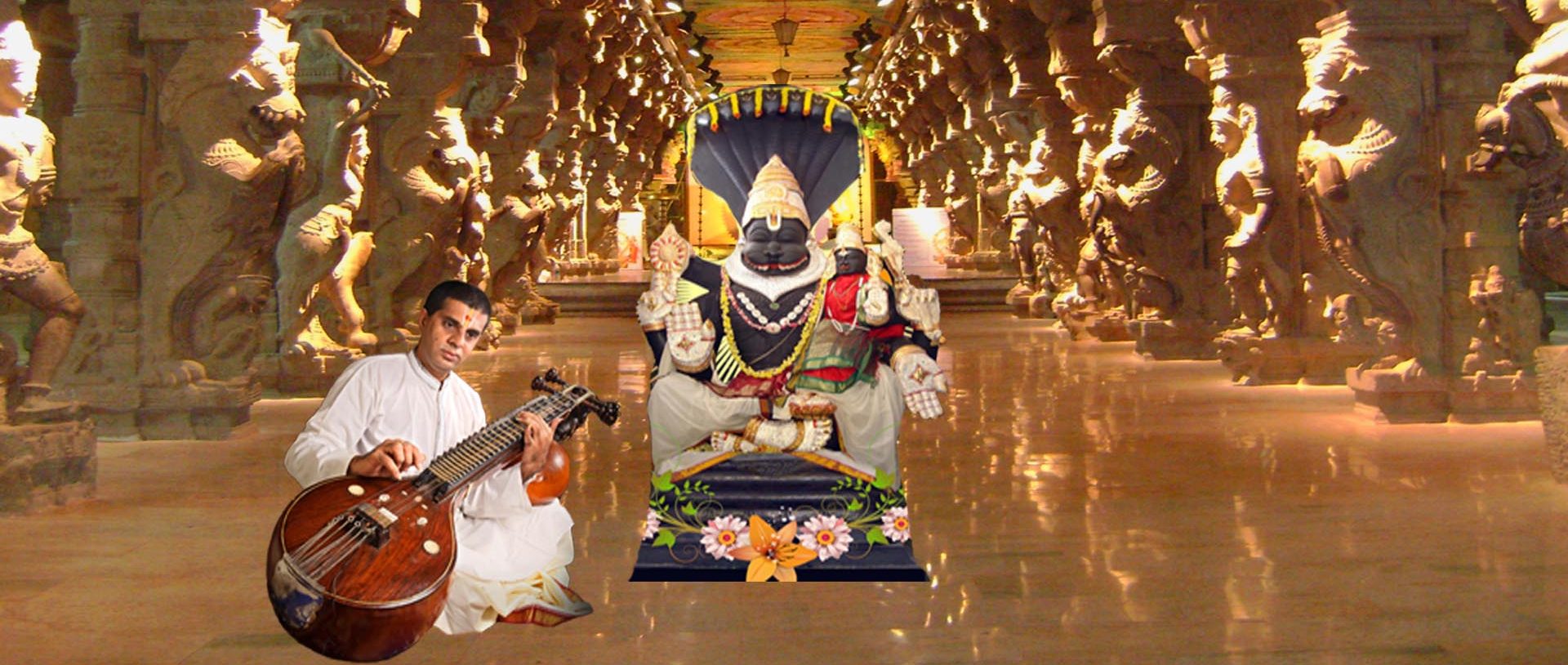Saraswati, the goddess of learning, has always been revered. Indian philosophy treats both the Word (Shabda) and the Voice (Nada) as Brahma. Therefore, Saraswati is always depicted with a string instrument. The shape of this instrument continued to change over time. This highlights that in Indian Art the idea always dominates the matter. The artist was always keen to attribute to the Goddess the highest form of learning, therefore she did not hesitate to prefer the superior instrument of her time to the traditional one.
(i) Earlier veenas, Vipanchi, Chitra and Ghoshvati:
A statue from 1500 BC, “Roopur”, shows a cross-legged woman holding an instrument horizontally at waist level. Scholars consider this instrument to be the Vipanchi Veena, with which three Vedic notes can be tuned.
Thirteen centuries later, around 150 BC (Bharhut), there is a group of twelve musicians playing Mridang, Manjeera, Vipanchi Veena, marking rhythms and depicting women singing. Another band from the same period, carved at the west gate of the Sanchi Stupa, shows one playing the flute, another playing the Bharat-era Mridang, and the two playing the Vipanchi Veena.
Such sources indicate that from the third, second century BC to the sixth to seventh century AD, the prominent Veenas were Vipanchi, Chitra, and Ghoshvati. Vipanchi was nine-stringed while Chitra was seven-stringed and Ghoshvati was single-stringed. Based on existing sculptures and paintings, it can be interpreted that Vipanchi was like a modern Harp, Chitra was like Sarod, and Ghoshvati was built like Ektara.
The statue of Gandharva Chittorgarh Topkhana from 200 BC to 600 AD shows Chitra Veena, Huduk and Pinaki as well as percussion. A panel from the second century Nagarjun Konda shows a woman playing Chitra Veena while others listen with enthusiasm.
The same is depicted in Ajanta, Cave 411 (2nd BC – 6th century AD), but while the instrument appears to have frets, there was no mention of fretted instruments prior to Matang’s Kinnari Veena.
A fifth-century panel of a dancer surrounded by musician from Pawaya gives a clear depiction of instruments such as Mridang, Chitra, and Vipanchi Veena. Seven key buttons can be seen on Chitra Veena.
A female figure in Ellora Cave 2113 (seventh century) portrays Alapini Veena, a variant of Eccentric.
(ii) Saraswati with Vipanchi Veena:
A sixth-century bronze of Nalanda holding Saraswati’s Vipanchi Veena shows the figure playing the flute on the right and percussion on the left wing.
(iii) Saraswati with Kachchapi Veena:
Abner, a Veena player from the Harsat Mata temple, shows him holding a different instrument that has never been seen before. Based on its shape, it could be Kachchapi Veena.
(iv) Ghoshvati Veena Veena with Saraswati:
Another figure from the same temple is the first explicit depiction of the curtains. Ghoshvati Veena here has no resonators.
(v) Saraswati with Kinnari Veena:
Belur, the 12th century idol of Saraswati in the Chennakesava temple, is depicted with a variation of the Kinnari Veena. This is the instrument that started the Veena form developed by the Tanjore masters.
(vi) Saraswati with Ectantri Veena:
The Hoysaleshwar temple (12th century) of the same period in Alebid shows the Goddess playing the Ectantri Veena.
Saraswati with Ektantri Veena at Keshava Temple, Somnathpur, Mysore.
http://www.pazhs.com/gallery/Somnathpur/…
12th century Saraswati in Kothanoor with Ectantri
http://omenad.net/page.php?goPage=%2Fart…
(vii) Saraswati with Rudra Veena:
The seventeenth century (Rameshwaram temple) in which Saraswati is depicted playing Rudra Veena, perhaps caused this instrument to be adopted by Seni musicians who called it Saraswati Veena. This is the tool that reappears again and again in the medieval period, especially in Ragmala paintings.
http://en.wikipedia.org/wiki/Rudra_veena
(viii) Saraswati and Tanjore Veena
In the second half of the nineteenth century, when Raja Ravi Varma’s paintings captivated the west and became a source of inspiration for calendar art, Tanjore Veena arose in Saraswati’s hands. This title has been given for almost a century and a half.

